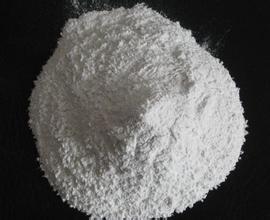Precautions in Huasheng refractory desulfurization process
The technology of desulfurization and magnesium oxide has been introduced in many domestic power plants due to its sophisticated technology, sufficient material history, high desulfurization power, low capital cost, low operating cost and reliable operation. Nowadays, the company has built more than a dozen sets of magnesia flue gas desulfurization equipment, and the construction equipment and operation experience are relatively rich. The following focuses on several issues that should be noted in the construction of magnesium oxide desulfurization technology.
1. Construction of pipelines
The causticization process of desulfurized magnesium oxide is a slow and messy process. In the process of transporting the magnesium hydroxide slurry from the causticization tank to the magnesium hydroxide storage tank and transporting it to the desulfurization tower, the slurry is a condition in which the particles and the liquid coexist, and the pipe diameter, the elbow, the valve, etc. are simply blocked. The system poses a great safety hazard, which requires attention to prevent system safety hazards caused by poor construction during construction.
Usually there are four places where the pipeline is blocked, one is the tee with the valve; the other is the elbow with the climbing pipe; the third is the nozzle; the fourth is the outlet of the pump.
The three-way valve with the valve blocks the slurry because the residual slurry appears dead at the same time, and the residual slurry can not be completely removed. The change of the external temperature causes the crystallization of magnesium oxide, which eventually blocks the pipeline. The best way to deal with this problem during the construction period is to keep the valve as short as possible without affecting the loading and unloading bolts. Occasionally, residual liquid can also be brought into the slurry under the scouring of the slurry.
Pipes carrying slurry should be cut as much as possible. If it cannot be prevented, it is best to flush the pipe at the lower level pipe and the high-end pipe, but the barriers at both places must be very close to the opening point;
Slurry nozzle blockage is difficult to handle, and the best method is to reduce the number of spray nozzles, add the number of multiwell plates or add a liquid plate.
Other pipeline construction usually uses steel pipe lining rubber or glass fiber reinforced plastic pipe as the slurry transportation pipeline. These two pipelines are expensive. Recently, some manufacturers use rubber pipelines as slurry to transport slurry pipelines. This pipeline has low cost and convenient maintenance. The replacement time is short, and it is not necessary to wait for the rubber line to wait for the rubber lining, but the pipe bracket is more.
2. Chimney and desulfurization tower
Due to the late launch of China's desulfurization business, many power plants have been carrying out the expansion of existing boilers and the installation of desulfurization equipment, often due to the severe location and the inability to equip equipment.
The combination of the chimney and the desulfurization tower is a good choice, both reducing the floor space and reducing the capital contribution. Moreover, if the existing boiler is added to the desulfurization equipment, the "smoke tower integration" method is selected, and the original chimney and the horizontal flue are also disposed of. Our company successfully planned the magnesium oxide desulfurization project of chimney and desulfurization tower.
3. Anti-corrosion of magnesium oxide desulfurization tower
Anti-corrosion is an important part of desulfurization. The anti-corrosion of desulfurization tower directly affects the safe operation of desulfurization system and the desulfurization power. In today's common FRP scale anti-corrosion, the links that must be paid attention to during the construction period are as follows:
1) Polishing of the weld. The grinding of the weld directly affects the marking of the scale, and the thickness must not exceed 2 mm of the wall. It is necessary to have a slow arc over the weld and the tower wall.
2) Sandblasting. Many construction teams pay little attention to the blasting process. Usually, this part is not done properly, causing large drops of glass scales to form corrosion of all desulfurization towers. Sandblasting must use quartz sand, and the particles should be placed at 2mm. If there is no quartz sand, sandblasting is required. The slab after blasting has a metallic luster, and the impression of the sand does not exceed 1.5 mm.
4, defogger equipment
The defogger equipment directly affects the emission quality of the flue gas. The defogger not only removes the moisture and impurities in the flue gas, but also directly affects the desulfurization power.
The amount and uniformity of the flushing water is very important, the amount of flushing water is small, and the impurities rich in the mist eliminator are hung on the defogger, which affects the power of the defogger, and can severely block the defogger and form a high pressure in the tower. The flue gas temperature is high, the desulfurization power is reduced, and even the demister is damaged. The uneven water scouring will also form the above doubts. Therefore, it is necessary to equip the scouring water system when requesting the defogger equipment.
The height (thickness) of the mist eliminator should be moderate. Too high and too long will result in low temperature of the flue gas outlet, high pressure in the tower; too short (thin), poor defogging effect, high outlet pressure, flue gas The temperature is too high.







 wangwang
wangwang
